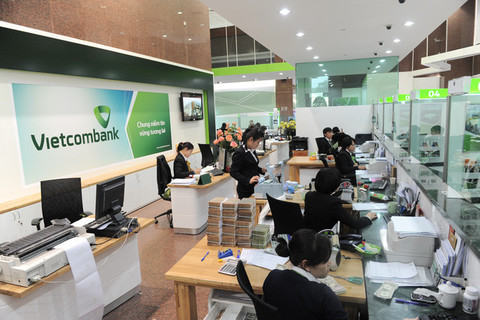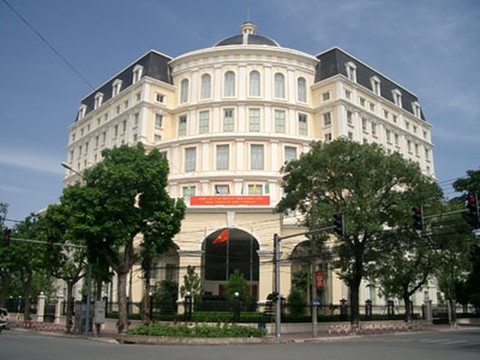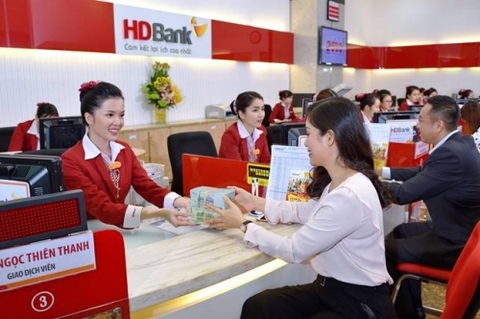Credit slowdown causes concern about access to bank loans
Credit slowdown causes concern about access to bank loans
Viet Nam's credit growth is slowing and can fall behind the central bank’s target of 14 per cent for 2019, causing concerns that it could make it difficult for businesses to access bank loans during the remaining months of the year. 
According to the State Bank of Viet Nam (SBV), as of September 24, credit growth had expanded 8.64 per cent compared to the end of 2018. The rate was the lowest increase in recent years, even lower than the 9.52 per cent rise during the same period in 2018.
In the SBV’s September survey on business trends at credit institutions, many credit institutions also forecast that 2019 credit growth would increase by 13.61 per cent this year, lower than the central bank’s 14 per cent target.
Growth has been slow in recent months. At the end of June, credit had increased by 7.33 per cent. The figure only inched up to 7.48 per cent by the end of July, then to 8 per cent at the end of August.
This seems to contradict lending reports from some banks which say they have nearly hit their credit growth quotas set by the central bank.
The central bank has also approved an increase to the credit growth limit in 2019 for banks that have met Basel II standards, such as ACB (13 per cent to 17 per cent), VPBank (12 per cent to 16 per cent), Techcombank (13 per cent to 17 per cent) and MBBank (13 per cent to 17 per cent).
However, the banks, which posted the highest credit growth in the first half of the year were mainly small- and medium-sized.
Credit growth at large banks, especially BIDV and VietinBank which account for nearly 25 per cent of outstanding loans in the entire banking system, was very low. VietinBank, for example, witnessed its credit increase by only 2.38 per cent in the first six months of 2019.
The reason why State-owned commercial banks cannot boost credit growth is that their capital adequacy ratio was close to the minimum threshold set by the SBV while they were unable to raise capital.
The credit slowdown was also due to banks’ plans to restructure their balance sheets. Instead of raising credit growth as in previous years, many banks have been forced to reduce credit scale to meet the central bank’s Basel II standards.
This cut to credit supply has made many people worried, especially businesses. However, experts say banks are only tightening credit with highly risky industries and sectors, such as real estate.
Nguyen Quoc Hung, director of the SBV’s Credit Department, said that bank loans for the Government’s priority sectors had still increased significantly, of which credit for high-tech applicable firms increased by 22.04 per cent; exports, 13.2 per cent; and small- and medium-sized enterprises, 11.42 per cent.
Despite the credit slowdown, the country’s GDP growth hit a nine-year high of 6.98 per cent in the first nine months of the year. It was a positive signal as the credit slowdown did not hit economic growth, meaning the economy has become less dependent on bank credit and relying more on other channels such as the securities and corporate bond markets.
As of September 24, credit growth had expanded 8.64 per cent compared to the end of 2018, the lowest increase in recent years. VNA/VNS Photo
Viet Nam's credit growth is slowing and can fall behind the central bank’s target of 14 per cent for 2019, causing concerns that it could make it difficult for businesses to access bank loans during the remaining months of the year.
According to the State Bank of Viet Nam (SBV), as of September 24, credit growth had expanded 8.64 per cent compared to the end of 2018. The rate was the lowest increase in recent years, even lower than the 9.52 per cent rise during the same period in 2018.
In the SBV’s September survey on business trends at credit institutions, many credit institutions also forecast that 2019 credit growth would increase by 13.61 per cent this year, lower than the central bank’s 14 per cent target.
Growth has been slow in recent months. At the end of June, credit had increased by 7.33 per cent. The figure only inched up to 7.48 per cent by the end of July, then to 8 per cent at the end of August.
This seems to contradict lending reports from some banks which say they have nearly hit their credit growth quotas set by the central bank.
The central bank has also approved an increase to the credit growth limit in 2019 for banks that have met Basel II standards, such as ACB (13 per cent to 17 per cent), VPBank (12 per cent to 16 per cent), Techcombank (13 per cent to 17 per cent) and MBBank (13 per cent to 17 per cent).
However, the banks, which posted the highest credit growth in the first half of the year were mainly small- and medium-sized.
Credit growth at large banks, especially BIDV and VietinBank which account for nearly 25 per cent of outstanding loans in the entire banking system, was very low. VietinBank, for example, witnessed its credit increase by only 2.38 per cent in the first six months of 2019.
The reason why State-owned commercial banks cannot boost credit growth is that their capital adequacy ratio was close to the minimum threshold set by the SBV while they were unable to raise capital.
The credit slowdown was also due to banks’ plans to restructure their balance sheets. Instead of raising credit growth as in previous years, many banks have been forced to reduce credit scale to meet the central bank’s Basel II standards.
This cut to credit supply has made many people worried, especially businesses. However, experts say banks are only tightening credit with highly risky industries and sectors, such as real estate.
Nguyen Quoc Hung, director of the SBV’s Credit Department, said that bank loans for the Government’s priority sectors had still increased significantly, of which credit for high-tech applicable firms increased by 22.04 per cent; exports, 13.2 per cent; and small- and medium-sized enterprises, 11.42 per cent.
Despite the credit slowdown, the country’s GDP growth hit a nine-year high of 6.98 per cent in the first nine months of the year. It was a positive signal as the credit slowdown did not hit economic growth, meaning the economy has become less dependent on bank credit and relying more on other channels such as the securities and corporate bond markets.




















